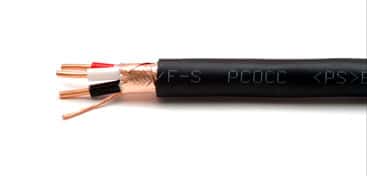You often hear audiophiles talk about the importance of the room to sound and saying it’s as important as the gear. Very true, however, Power is short-changed in the sound equation. It’s my opinion that a true master of crafting sound will make a relentless pursuit of controlling and enhancing power at every point throughout the system. If you hear sound that really impresses you take a look at what the system designer has done with respect to power, and as we’ll discuss that doesn’t just mean from the wall to the conditioner, but from the wall to the speakers. Also remember the more refined the rest of the system the more you’ll hear how the quality of your power is impacting your sound. In a truly high-performance reference system the equation is more like 1/3 components, 1/3 room and 1/3 power.
Imagine replacing the nitro fuel in a top-fuel dragster with 87 octane from your local gas station. It wouldn’t run, but let’s say you did the necessary modifications to make it work. The hardware remains unchanged and so is the track, the only change is a different fuel. I’ve never tried this, but I’m willing to bet it would reduce the performance by as much as 40%.
There are a number of ways to improve your power, but they all generally fall into a handful of categories.
- Electrical is what I’d classify as everything to the wall outlet. A typical first step is to have a dedicated circuit installed to the system. Even better if you’re building or remodeling; think ahead and find some ultra-high-purity in-wall wire and have it cryo treated. You may not be in a position to replace the wire in the wall, but don’t stress over this, there are some improvements you can have made to the electrical panel. High purity wire to the breaker, cryo treat the wire and breaker, clean the connections and apply contact enhancer at each junction are a few things you can do. A word of warning…hire an electrician to do the work on the panel. These days it’s tempting to watch a YouTube video or read an online tutorial, but this isn’t like changing an outlet and you should let an electrician do the work. The hourly rate for an electrician is high, but they can work fast if you’re prepared and it’s money well spent. Using an audio-grade wall outlet is a must and I recommend switching the plastic cover plate with at least a brass plate from the hardware store.

Filtering
Enhancement
Regeneration
On the 8th floor of a building in the heart of Downtown Seattle, with a bar and restaurant in the lobby and about 60 other tennants in the building our power is less than optimal.
Power conditioning technology is always evolving. Don’t believe that just because your newest component that uses filtering or regeneration or QRT that there’s no room left to improve your power
It’s never going to be that easy to control electrons, one of the smallest particles in the universe…it’s like controlling dust in a football stadium. However, we do what we can.
Circuit breaker upgrades
It’s tempting to watch a few You-Tube videos and read some Internet articles and think working on your circuit panel can be a DIY project. Keep in mind that the stakes are very high here; this isn’t like flipping a breaker and installing an outlet. Electricians aren’t cheap, but changing out a breaker and some wire in the panel is a small job for most electricians and probably won’t cost you much more than $100. Be smart and hire a pro to work on this stuff. Do some consultation ahead of time about what you intend to do and whether any materials you’re supplying will be acceptable, so the job goes smoothly and the cost remains low.
Here’s a run-down of the gear we have in our system to condition our power
Imagine fueling a top-fuel dragster with regular, 87 octane, unleaded gasoline, like that you put in your car at the pump.
nois sniffer
Balanced Power with F3
Power Plant
Velocitor
Isotek cable.
